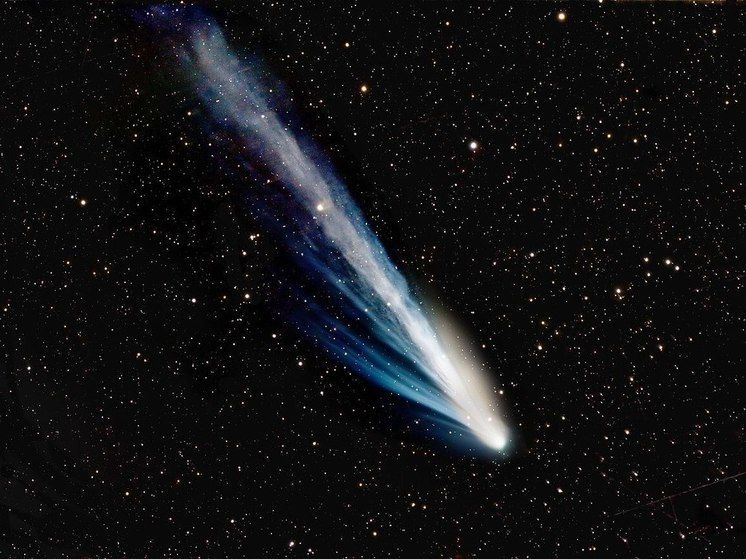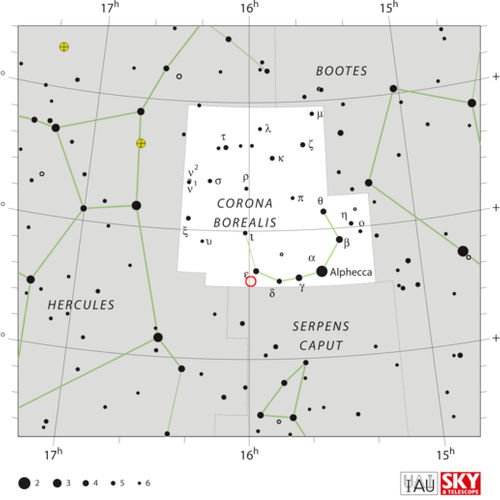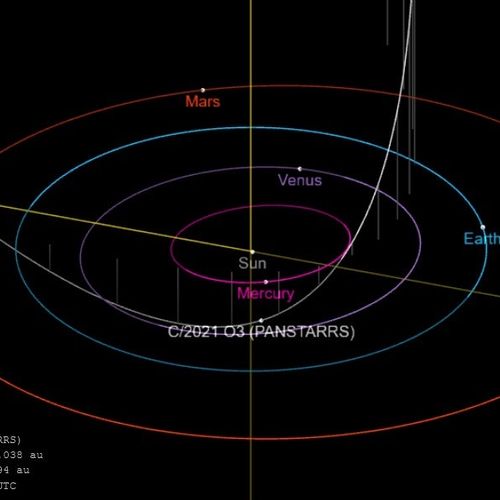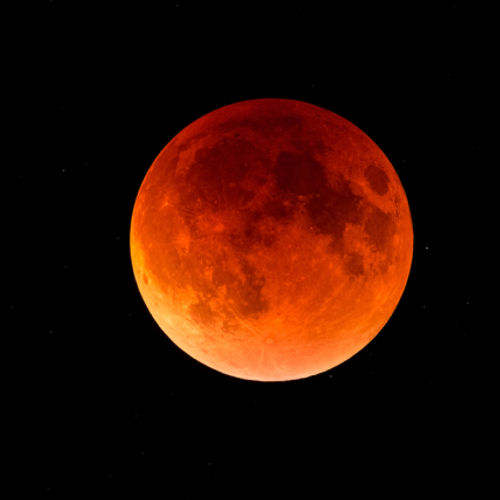
| Added | Sat, 08/06/2024 |
| Источники | |
| Дата публикации | Sat, 08/06/2024
|
| Версии |
An unusual horned comet, known for a series of flares, dubbed the “devil's comet", approached the Earth at the closest possible distance on Sunday.
While residents of the Northern Hemisphere have not seen a comet since the first week of May, those who observe the sky in the Southern Hemisphere are more likely to see a fuzzy object through binoculars or a telescope, CNN notes.
Why exactly a dynamic comet takes the form that is compared to the spaceship “The Millennium Falcon” from the "Star Wars" movies, when it is explosive, still remains a mystery to scientists. But this celestial object makes only one revolution around the Sun about every 71 years, like Halley's comet, which makes it possible to observe it at close range only once in a lifetime.
Given that the comet will no longer pass by Earth for decades, collective observations by astronomers could provide clues to its true nature and behavior, CNN emphasizes.
Officially known as Comet 12P/The Pons-Brooks celestial object made its closest pass by the Sun on April 21, approaching our star at a distance of 119.7 million kilometers.
The comet is approaching Earth on Sunday, but it will pass at a distance of more than 230 million kilometers from our planet and will not pose a danger. For reference, the Sun is located at a distance of 149 million kilometers from Earth.
According to Dr. Dave Schleicher, an astronomer at the Lowell Observatory in Arizona, the comet peaked in brightness in late April and steadily faded for three to four weeks.
“For people living below the equator, the coming weeks and months may be the first good chance to see this phenomenon for the first time since the 1950s,” said astronomer Dr. Teddy Kareta, a researcher at Lowell University.
Two outstanding discoverers, Jean-Louis Pons and William Robert Brooks, independently observed the devil's comet — Pons in 1812 and Brooks in 1883. But the comet probably made many revolutions around the Sun over thousands of years, long before astronomers began to think of comets as anything other than “something strange in the atmosphere,” Schleicher said.
Astronomers estimate that the diameter of the massive comet ranges from 10 to 20 kilometers, says Dr. Kareta.
A rare visitor has a green color, typical for most comets, because they contain diatomic carbon molecules that absorb sunlight and emit a color that appears green from our point of view," Schleicher said.
Recently, comet Pons-Brooks attracted the attention of astronomers by demonstrating an intriguing behavior that caused it to acquire a horned appearance and fly through our solar system.
Over the past eight months, the comet has had several flares, as a result of which it has released gas and dust. Although such emissions are not uncommon for comets, and other comets have had a crescent or Pacman shape, it is difficult to say what is normal for Comet Pons-Brooks.
“I would say this is somewhat unusual because of the number of outbreaks,” Schleicher said. “On the other hand, it doesn't seem like you have good records from the past that really let you understand what is typical. And I suspect that, given the fairly large number of outbreaks that have occurred over the past eight months, this is undoubtedly a common occurrence for Ponce-Brooks.”
Comets are chunks of dust, rock and ice, essentially frozen remnants from the formation of the Solar System, CNN explains. They also contain frozen elements such as carbon dioxide and carbon monoxide.
After eating wild animal meat, the whole family became victims of parasitic worms.
According to Schleicher, comets heat up and become brighter as they approach the Sun, and some of the frozen gases contained in comets do not need to heat up much before they begin to turn into steam.
“We believe that the main driving force, of course, is the heating from the sun," he said. – A comet is approaching; it has been in deep freeze for years. The heat will spread from the surface down to where the carbon dioxide or carbon monoxide ice is located.”
Astronomers suspect that Comet Pons-Brooks flares occurred during recurring events when heat evaporated material inside the comet, causing pressure to rise and break through the surface. According to Schleicher, while the gas explosion would not have been visible through telescopes, the dust it raised could have caused events similar to those observed with the Pons-Brooks telescope.
Scientists tracked the jets of matter that were observed to be ejected from the comet during its flare in two source regions on its surface. Astronomers are wondering why “the whole surface doesn't explode like crazy,” Schleicher said.
Observations show that most of the surface has been crusted with ice or the ice has evaporated, leaving only dirt, but astronomers are “not quite sure which of these mechanisms controls the process,” he said.
However, the comet's outbursts seem to have stopped, and it has not shown any activity since February, comments Teddy Kareta.
Astronomers have been watching Pons-Brooks in the hope of learning more details about the speed of its rotation or the speed at which comets rotate as they move through space. The orbital period of comet Pons-Brooks is 57 hours, which is longer than expected, and astronomers want to know whether the jets of matter ejected by the comet accelerate or slow it down.
According to Dr. Caret, a number of coincidental events likely influenced the characteristic appearance of Comet Pons-Brooks, but it may also be related to our view of the comet.
“These are three-dimensional objects,” says Teddy Kareta. “When we take pictures of the night sky, we use a limited range of colors, smoothed in two dimensions. It will give things that might make sense to you if you could get up, walk around and look at them from several different points of view a much more complex look than they actually are.”
Новости со схожими версиями
Log in or register to post comments









